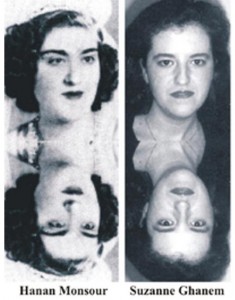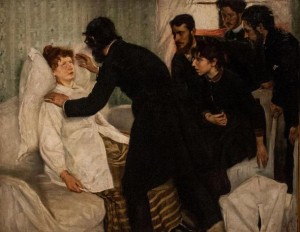There are times when a person feels like they have been somewhere before or just “knows” things or people without having met them before. Often we write this off as the strange experience of déjà-vu or a coincidence. Imagine that the experience multiplies and an individual says they remember exact details about other people, and places they have never experienced, maybe they can even speak a language never taught to them. Some people claim they have had these experiences – and scientists have taken an interest in their cases. Research has been done to try to find if there is validity to the experiences, but there are some instances where the situation has been unexplainable by science…could it be reincarnation at play?
Reincarnation: A Simple Definition for a Complex Idea
First it is important to take a short look at what reincarnation is about. It is not a synonym for past life regression (PLR) or past life memories, although these are often used as so-called “proof” of reincarnation. Reincarnation is also not necessarily a religious belief. Although it is associated by many with specific religions, it is not necessary that a person identifying with a religion accepts the prospect of reincarnation or a person to follow a specific religion to accept reincarnation either.
One simple definition of reincarnation (there are many) can be: the rebirth of a soul into another vessel. People who believe in reincarnation may see the body and mind as two separate entities. Thus the idea is that when the body dies the mind does not die as well; instead the mind (or spirit) leaves the body and continues its journey into another life. Reincarnation is also associated with karma in most beliefs, or the idea that the soul passes on a spiritual journey where the past and future are connected by life choices.
Reincarnation. (Himalayan Academy)
One must note that there are obviously many individuals that disagree with the concept of reincarnation in totality and see this as the only life (often doing the best they can to make it a good one!) Or see the end of this life as the means to reach a final resting place… be it “good,” “bad,” or neutral. The article here will not be focused on these ideas about the afterlife (themes for the future); alternatively, this article examines the experiences of past life memories and past life regression – two concepts that are often associated with reincarnation.
Past Life Memories in Children: Dr. Stevenson’s Lifelong Research Project
There have been numerous cases of children spontaneously “remembering” past lives. One of the most famous doctors associated with documenting these past life memories in children was Dr. Ian Stevenson. Dr. Stevenson, who died in 2007, studied over 2500 cases of children that reported past life memories. Of these, he said that 1200 of his cases could be objectively validated.
Dr. Stevenson mostly studied cases of past life memories in children from areas where reincarnation was a dominant belief (i.e. Asia, India…). From his forty years of research he identified seven common features to the past life memories of children, which he himself stated was only evidence, not proof.
- The child begins to describe a past life experiences as soon as (s)he begins to communicate.
- The child remembers details of his/her death from a past life.
- There is enough description provided on the family of the child’s past incarnation that the past family is eventually identified.
- There is continuity in the personality traits, preferences, and habits across the incarnations.
- 90% of the time gender also remains the same.
- Physical appearance, especially facial features, tends to be similar between past and present lives.
- Reincarnation renews familial/social relationships.
The Hanan Monsour/Suzanne Ghanem Story of Childhood Past Life Memories
Perhaps the best-known story in childhood past life memories is that of Hanan Monsour/Suzanne Ghanem. In the mid 1930s Hanan was born in Lebanon. In her twenties she married a man named Farouk Monsour. The couple had two daughters, Leila and Galareh, but after their second daughter was born Hanan developed a heart condition and was told not to have more children. She ignored the warning and gave birth to a son in 1962. In 1963 Hanan’s health worsened and at the age of 36 she went to Virginia to have heart surgery. She tried repeatedly to telephone her daughter Leila before she had the surgery but was unable to communicate with her that she wanted her jewelry split evenly between her daughters if she did not survive.
Hanan died of complications of her surgery. Ten days later Suzanne Ghanem was born. When Suzanne was 16 months old she reportedly pulled the telephone off the hook and repeatedly said, “Hello. Leila?” This seemed strange to her parents as they did not know anyone named Leila. Once she was a little older she told her family that Leila was her daughter and she wasn’t Suzanne, she was Hanan. By the time Suzanne was two, claims say that she told her current family the names of 13 of the family members from her past life family.
Photos of Hanan Monsour and Suzanne Ghanem. Believers in Dr. Stevenson’s characteristics of childhood past life memory experiences see a similarity between the facial features of the two women. (IISIS)
The Ghanem family was surprised by Suzanne and began looking for the Monsour family. When the two families met the Monsours originally doubted that Suzanne was Hanan. They became less skeptical after Suzanne is said to have correctly named several of Hanan’s family members in photographs. When Suzanne was five years old she called Farouk at least three times a day and when she visited him she liked to sit on his lap and rest her head against his chest. Farouk eventually agreed that Suzanne was the reincarnation of his deceased wife after she was able to tell stories that only Hanan was thought to have known.
A video on the research of Dr. Jim Tucker (including the famous case of Anne Frank/ Barbro Karlen) can be watched here:
The Past Healing the Present: Past Life Regression (PLR) Therapy
To participate in past life regression, a person undergoes hypnosis with a goal to remember and often times heal problems from their past or present lives, or are trying to find their purpose in this incarnation. The participant is said to see, experience, and feel their past incarnations, with a guided journey following cues from a trained therapist.
With these characteristics in mind, it is not surprising that PLR is more common in adults than children. Many skeptics (including the previously mentioned researcher Dr. Stevenson), believe that the tales of past lives are more difficult to validate in adults than children, thus PLR in adulthood may be “tainted” by memories that are (unknowingly or intentionally) created by adults or false memories planted by well-meaning therapists.
Hypnotic séance (1887) Richard Bergh (Wikimedia Commons)
Nonetheless, many people who have undergone PLR therapy claim that it has greatly benefitted them in their current lives psychologically and/or interpersonally. As PLR includes noting promises, failures and successes, trauma, wisdom, etc. along with positive and negative life patterns, it is meant to help the participant to identify not only their memories and behaviors in the past but also to find current means to break bad habits/patterns and tap into strengths they are thought to have across their lifetimes. This type of therapy is reportedly useful for strong phobias as well.



